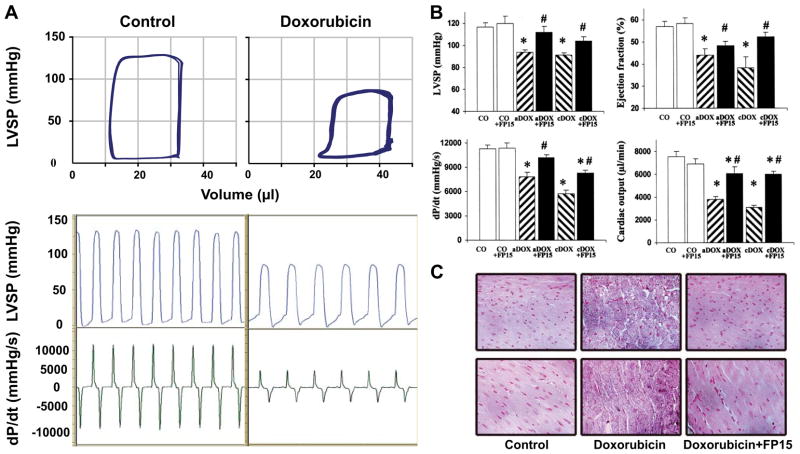FIG. 13.
Role of peroxynitrite in doxorubicin (DOX)-induced heart failure. A: evidence of severe cardiac dysfunction 5 days after DOX injection in mice. Representative PV loops (top) and left ventricular pressure signal (bottom) from control and DOX and DOX + INO-1001-treated mice. Please note that the rightward shift of PV loops in DOX-treated animals, the decrease of maximal left ventricular pressure, and +dP/dt indicate depressed cardiac contractility. B: peroxynitrite scavenger FP15 (black bars) attenuates DOX-induced (hatched bars) acute (aDOX; single dose of 25 mg/kg ip) and chronic (cDOX; 3 doses of 9 mg/kg ip every 10th day for 25 days) cardiac dysfunction. Hemodynamic parameters were measured 5 (aDOX) or 25 (cDOX) days after DOX administration. Results are means ± SE of 10–14 experiments in each group. *P < 0.05 vs. CO. #P < 0.05 vs. aDOX or cDOX. C: evidence of increased myocardial nitrotyrosine formation (widespread dark brown staining) 5 days after DOX injection in mice and reduction by FP15. [From Pacher and co-workers (985, 988) with permission from Lippincott Williams & Wilkins and Prof. Demetrios A. Spandidos.]

